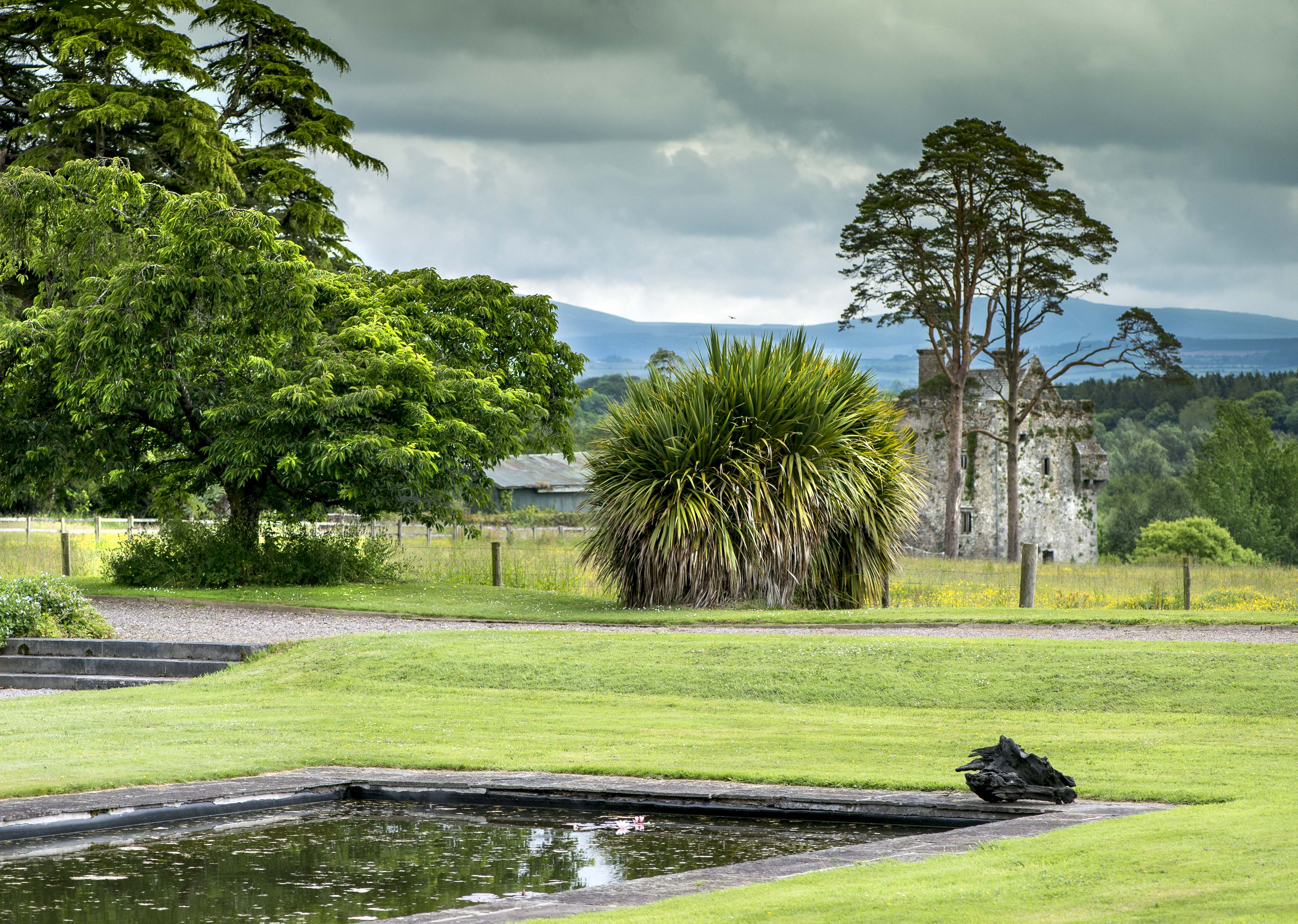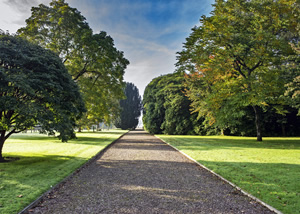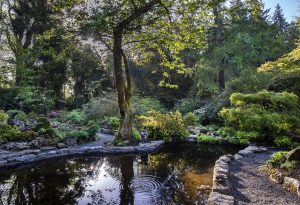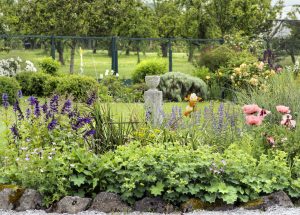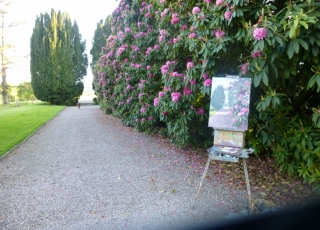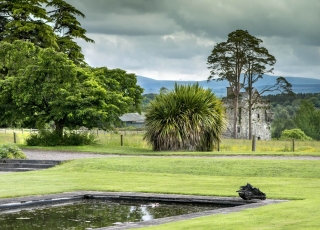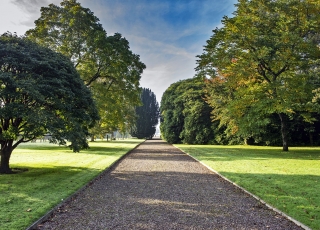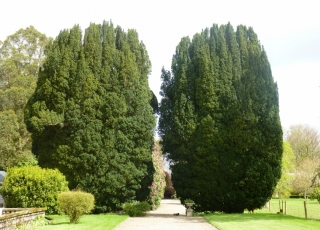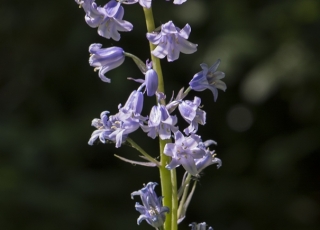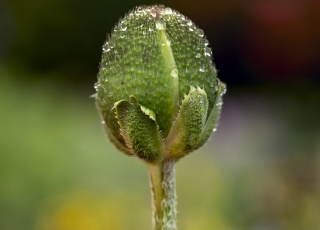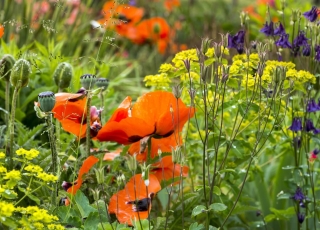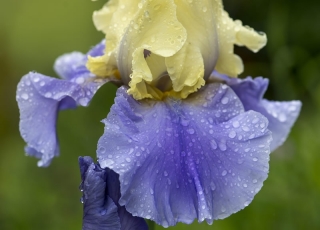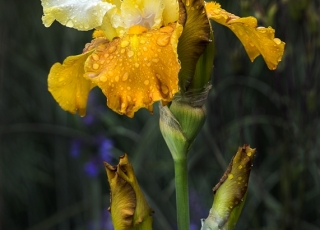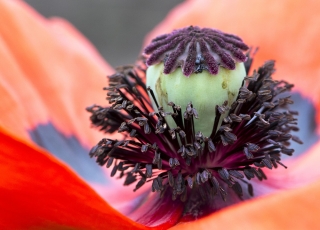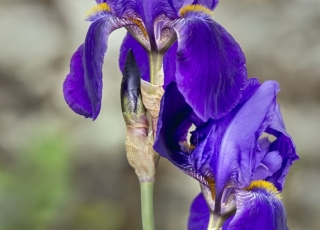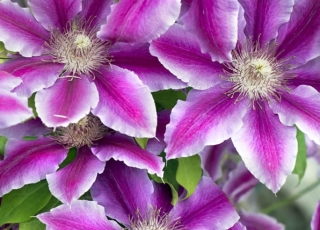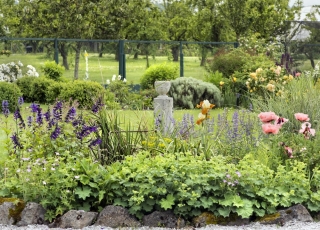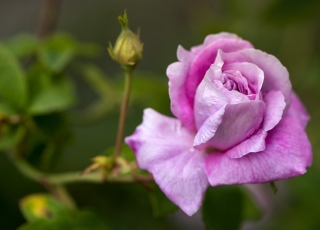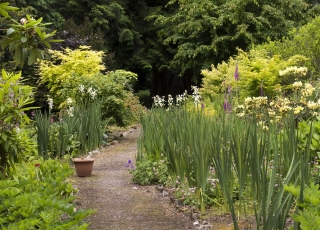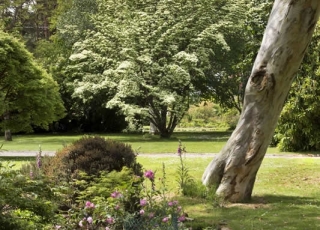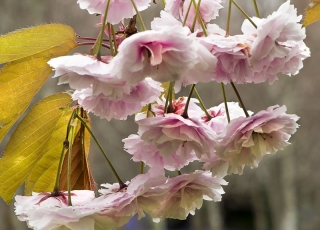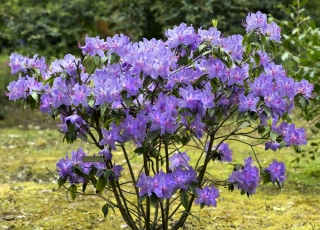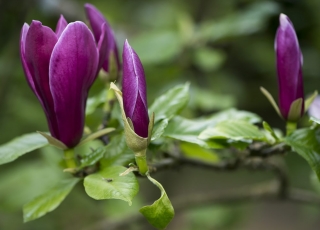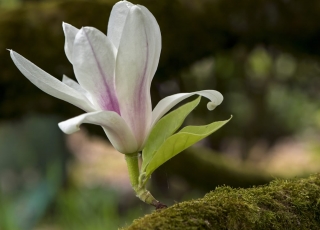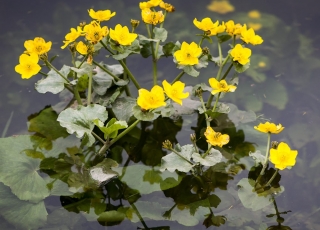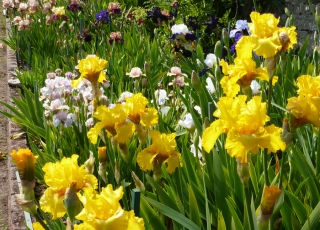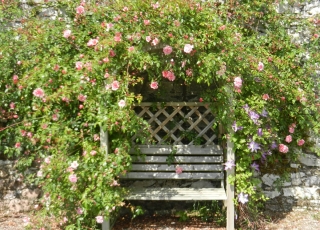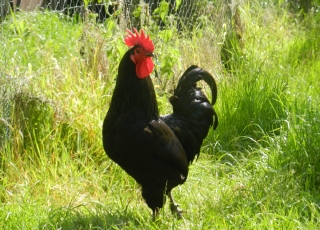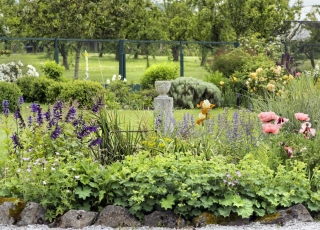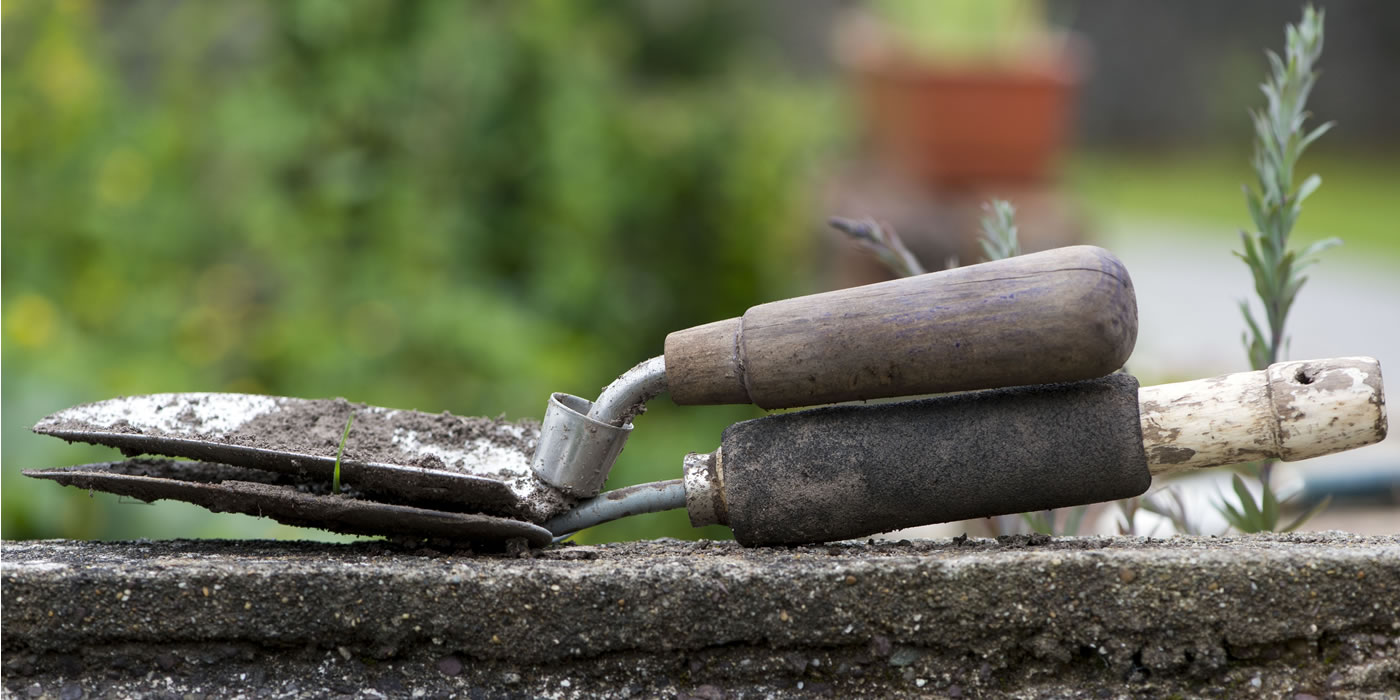
FRONT LAWN & POND AREA
Opposite the front door of the main house a large neat area of gravel was allowed - the carriage sweep - which survives to this day. It is bounded by lawns dominated by a handsome copse of orange-barked Scots pine. These are joined by several purple-leaved Japanese maples, a very tall Tulip Tree and thousands of spring bulbs.
A small iron gate leads from the gravel driveway to the south facing lawn and pond area. Here beds with red roses flank stone steps leading to the pond where the House can be seen reflected in the morning sunshine. Rhododendron ‘Altaclarense’ shelters this area from westerly winds and a very large mature oak with all its changing seasonal colours dominates the landscape.
BROAD WALK
A long formal broad walk of generous proportions leads from the house, linking it to the pleasure grounds and, beyond there, to the old walled garden which belonged to the earlier tower house. Broad walks became a fashionable garden feature of many Victorian gardens in Britain and Ireland during the 1840s and 1850s. Gravelled Broad Walks were grandly proportioned formal walks punctuated on either side by stately trees. Only one of the eight original cedars remain to-day and two very tall Irish Yews, which alongside a pair of handsome stone urns, flank a short rise of steps that leads on to an enormous thicket of the rose-magenta flowered Rhododendron ‘Altaclarense’. Here and in the pleasure grounds this early Victorian hybrid forms multi-stemmed giants up to 40 feet tall.
As the 19th. century progressed successive generations left their mark on the gardens. Richard Musgrave (1861-1938) was a great friend of the brewer and politician, Richard Henrik Beamish (1861-1938) who lived at Ashbourne House, Glounthaune, Co. Cork. Beamish was one of Ireland’s most renowned horticulturists and the gardens at Tourin were further extended at this time under his direction.
Much of the exciting planting you see today however is the work of the Jameson family and in particular the owners’ Norwegian mother. An enthusiastic and knowledgeable plantswoman, Didi Jameson imported rare trees and shrubs from leading nurseries of the time, including Hilliers of Winchester. Much of her planting has now reached maturity on the lawns to the rear of the broad walk and also in the main Pleasure Grounds. Magnolias are well represented in this garden and a further choice trees off the Broad Walk include Cercidophyllum japonicum, the spectacular dogwood Cornus kousa var. chinensis and the unaccountably rare Rhododendron macrocarpum, a small tree bearing fragrant white, cup-shaped blossoms in April.
The lower Broad Walk terminates at an elaborate Victorian semicircular stone seat and from there the pathway turns at right angles and narrows to meander informally through the Pleasure Grounds.
PLEASURE GROUNDS
The woodland garden is reminiscent of the gardens of Cornwall or Kerry. Extensive drifts of Solomon’s seal carpet the woodland floor alongside a large collection of hostas, cranesbills, deciduous azaleas and Japanese maples (a great speciality in this garden area). Candelabra primulas self-seed with wild abandon. Not far from a veteran tree of Cryptomeria japonica is the old rock garden planted with smaller alpine plants.
The superb mild climate created as a result of the garden’s proximity to the sea and the tidal Blackwater River, has meant that many trees have grown at an exceptional rate. Notable examples of the southern beech including Nothofagus obliqua and the evergreen N. dombeyi from Chili and Argentina, and the black beech N. solandri from New Zealand, are found in the sheltered confines of this area. South American trees thrive especially well here. The Chilean myrtle, Luma apiculate, forms a dramatic grove, in the shade of a gargantuan holm oak, Quercus ilex. Other fine specimens of a similar provenance include Winter’s bark, Drimys winteri var. chilensis, a multistemmed tree that is covered in broad corymbs of ivory-white blossoms every summer. Eucryphias grow exceptionally well in this sheltered piece of woodland, and, flowering as they do in August, they fill a gap when most gardens have few trees and shrubs in blossom. Eucryphia x nymansensis ‘ Nymansy’ is a sight when carrying thousands of snow-white blossoms.
Beyond the Pleasure Grounds lies the Walled Garden.
WALLED GARDEN
Built in the 18th century to supply the original Tower House with fruit, vegetables and flowers, a function it still fulfils to this day. Nowadays only one of the eight original glass houses exist and the walled garden is a mix of ornamental and productive planting and is at its best in high summer with generous plantings of sweat pea, roses, Salvias, Agapanthus, phlox, annual Cosmos, many of which are cut for the house. The area’s old world charm is deliberately heightened by the use of old fashioned flowers like sweet William and an impressive range of over 100 cultivars of bearded irises, all meticulously labelled.
Lying close to the walled garden is the stable yard, Victorian cut-stone barns and the older tower house of Tourin Castle. This area leads onto an extensive area of newly planted native woodland containing Tourin’s champion London Plane, Platanus x hispanica, before ultimately reaching Tourin Quay on the banks of the lovely Blackwater river.

